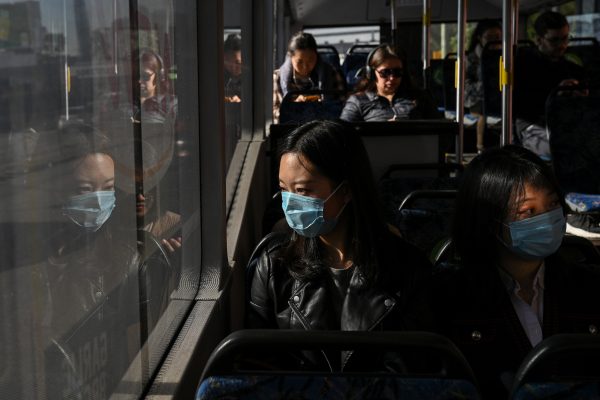Every sign indicates the real situation may be worse than this scenario. Halfway through 2021, there is no indication that the pandemic will end soon. Recent upsurges of COVID-19 cases and deaths in India have put Australia back on high alert and interrupted the country’s travel bubble arrangements with New Zealand and Singapore. Ongoing challenges with interstate travel and slow vaccination progress don’t bode well for the recovery of Australia’s tourism industry.
Tourism plays a key part in the Australian economy. In 2018–19, tourism contributed AU$60.8 billion (US$46 billion) to national GDP and created jobs for 5 per cent of Australia’s workforce. The tourism industry can serve as a multiplier to help revive related sectors like accommodation, road transportation and aviation. Tourism can play a strategic role in pulling the Australian economy back into normalcy.
But the government needs a strategy to leverage tourism recovery. The pandemic is not going away, so selective travel bubble arrangements between countries may be the best option for governments to reboot tourism. Australia has been exercising, in a limited sense, such policies with New Zealand and Singapore. Could travel bubbles be extended to other countries like China?
China plays an important role in Australia’s bilateral trade and tourism. In 2018–19, international visitors from China accounted for 27 per cent of Australia’s total international tourist spend, equivalent to the market share of visitor spend from the United States, United Kingdom, New Zealand and India combined. As Australia’s number one inbound visitor market, China cannot be neglected when formulating Australia’s tourism recovery strategy.
Despite its original outbreak in Wuhan, China has been leading the world in its management of COVID-19. By 22 June 2021, China recorded 117,548 confirmed COVID-19 cases and 5395 deaths, compared to the world total of over 178 million cases and 3.8 million deaths.
While most countries are constantly forced into snap lockdowns, China has mostly enjoyed a hassle-free domestic travel environment since the beginning of 2021. The Labour Day holiday in early May witnessed a rural tourism boom in China amid the COVID-19 pandemic.
Travel bubbles could be instituted between Australian state capital cities and major Chinese cities like Beijing, Shanghai, Guangzhou and Shenzhen — keeping in mind that quick lockdowns may happen in any of these cities. The benefits of travel bubbles with China spill over to Australia’s higher education sector — thousands of Chinese students would be able to return to Australian universities.
The pandemic also hammered a deadly blow to Australia’s higher education sector. International student numbers in Australia are expected to halve by mid-2021. In November 2020, over half of the 160,000 international students from China in Australian universities were stuck overseas. Despite a push for pilot trials to bring back international students, only one flight to Darwin in November 2020 carrying 63 students has taken place.
In December 2019, international students from China accounted for 28 per cent of all international students studying in Australia. But Australia’s hard border closure is diverting students to other countries. Travel bubbles with China could recover the declining market confidence in Australia as an international study destination.
While a travel bubble arrangement with China is critical for Australia’s tourism industry recovery, the barriers are obvious. The Australian government is unlikely to ease border restrictions before the end of 2021. China also seems to be very cautious and apparently won’t be opening its borders until the second half of 2022. And deteriorating Australia–China relations rule out the possibility of either government initiating or accepting a travel bubble proposal between the two countries in the short term.
Chinese consumers may also change their preferences post-pandemic and seek out more nature-based tourist attractions. Australia may have an advantage in its natural endowment of tourist resources and attractions toward the Chinese consumer market. On the other hand, the post-pandemic geopolitical landscape and international relations may divert Chinese travel destination preferences away from Australia.
In the early stages of Chinese outbound tourism development, the Approved Destination Status (ADS) scheme, under which the Chinese government sanctioned destination countries to receive guided groups of Chinese tourists, played a significant role. But when virtually all parts of the world opened to Chinese tourists, the ADS scheme became obsolete. Australia was one of the first Western countries to gain ADS status in 1999. The Australia–China ADS agreement benefited tourism relations and exchange in both countries.
Travel bubbles between China and outbound travel destination countries may emerge as a more effective policy tool than the ADS scheme to regulate Chinese outbound tourism. Other countries may also seek travel bubbles with China to spur the recovery of their tourism industries. They will need to have a high vaccination rate in their population and should have already brought infection numbers under strict control. And countries that recognise Chinese vaccines are likely to be treated more favourably. In the ADS era of Chinese outbound tourism, Australia was an early bird to ride on the scheme. In the COVID-19 era, it seems Australia still has the rein in its hands for tourism recovery.
Songshan (Sam) Huang is Professor of Tourism and Services Marketing at the School of Business and Law, Edith Cowan University.

